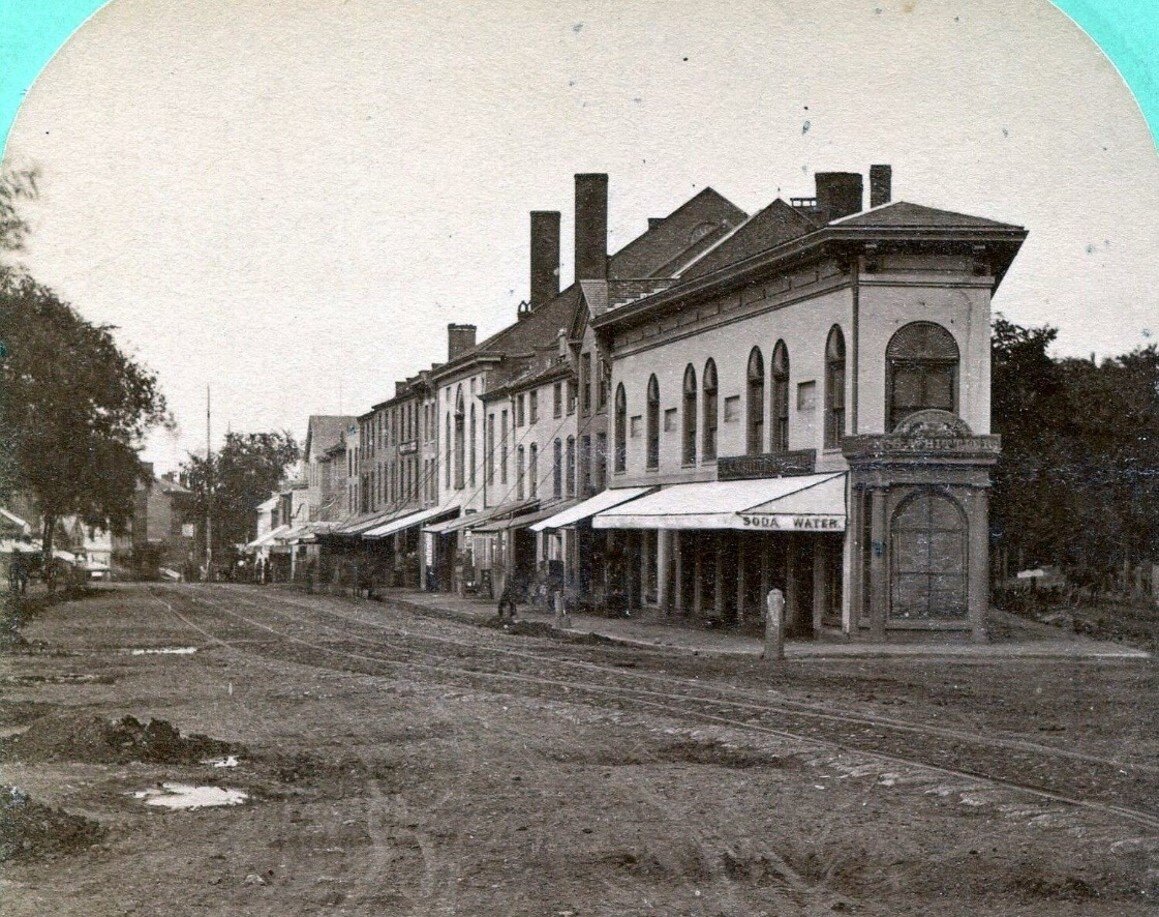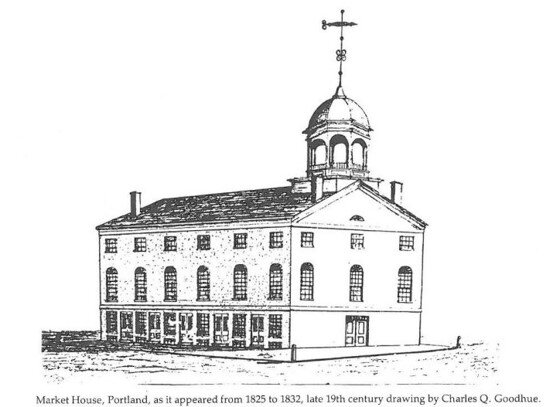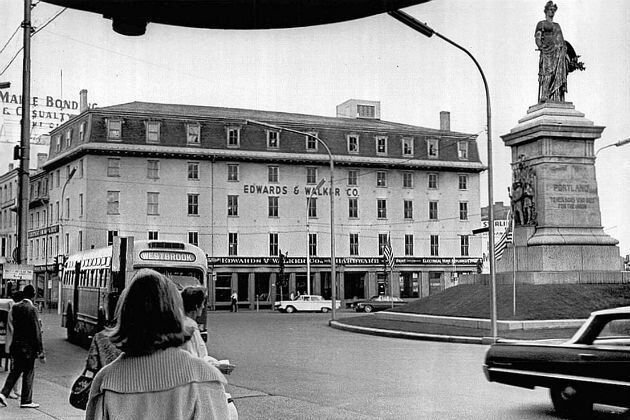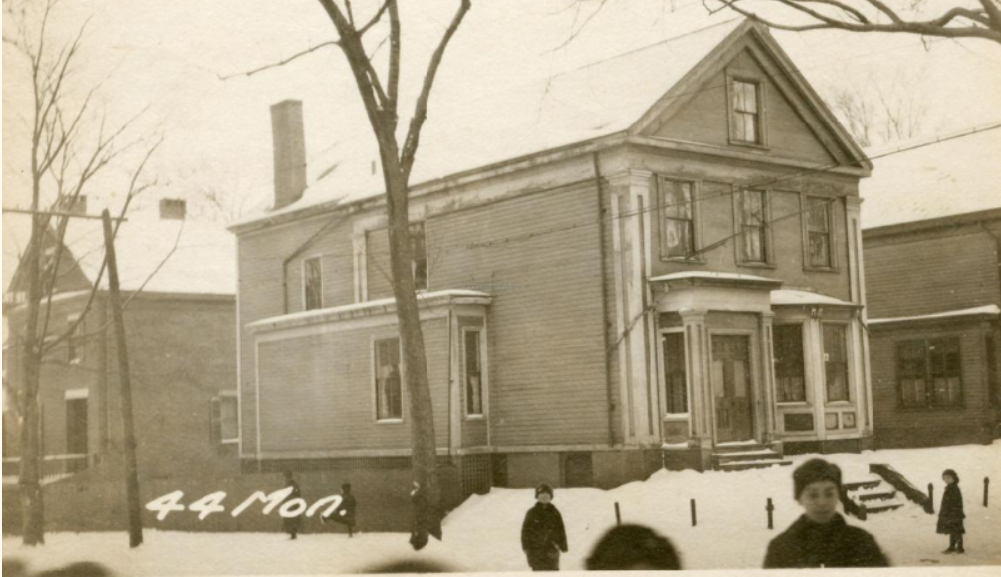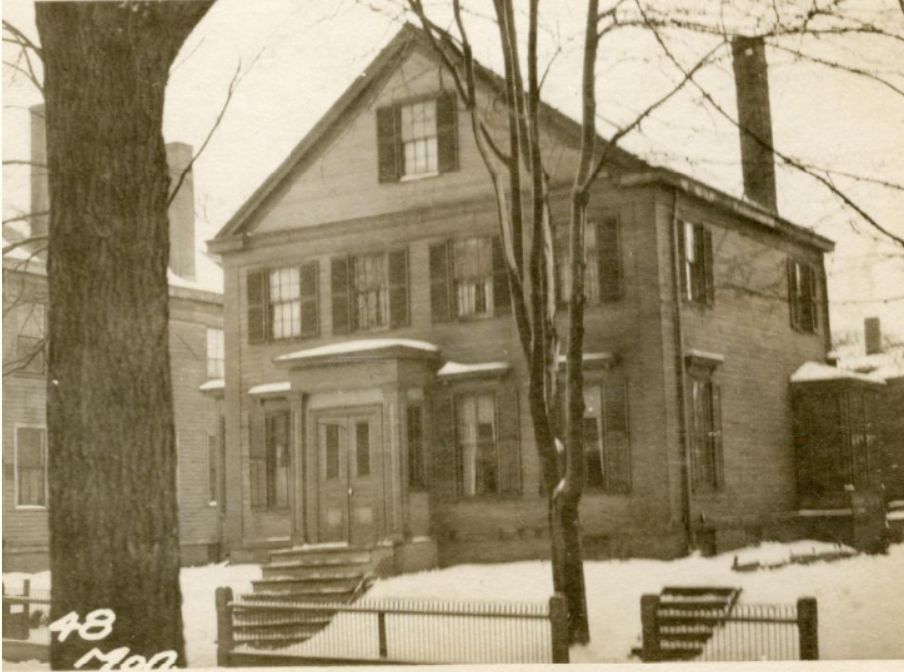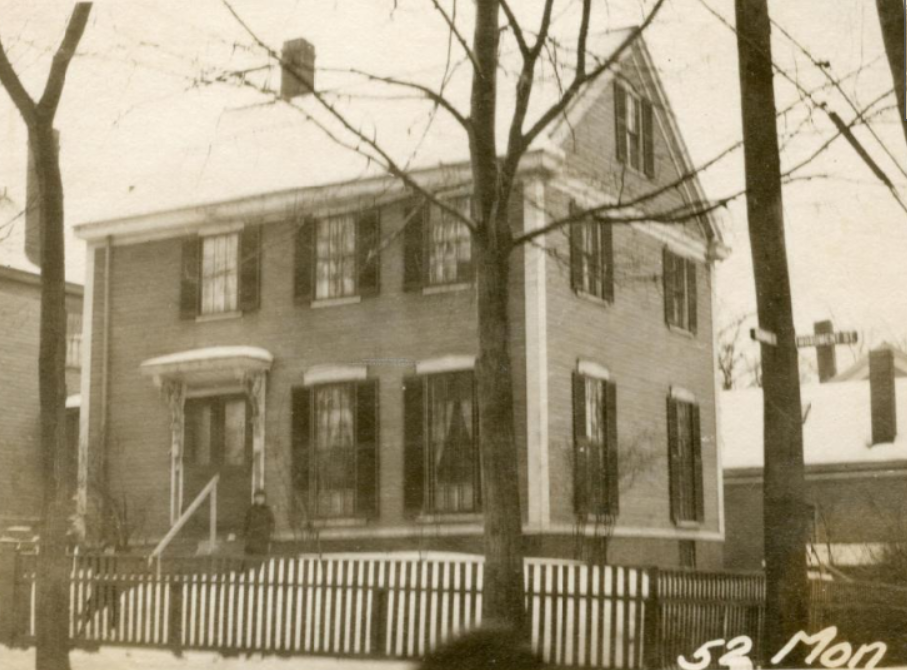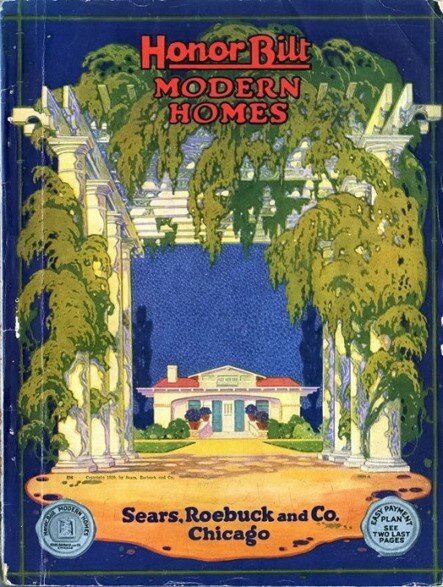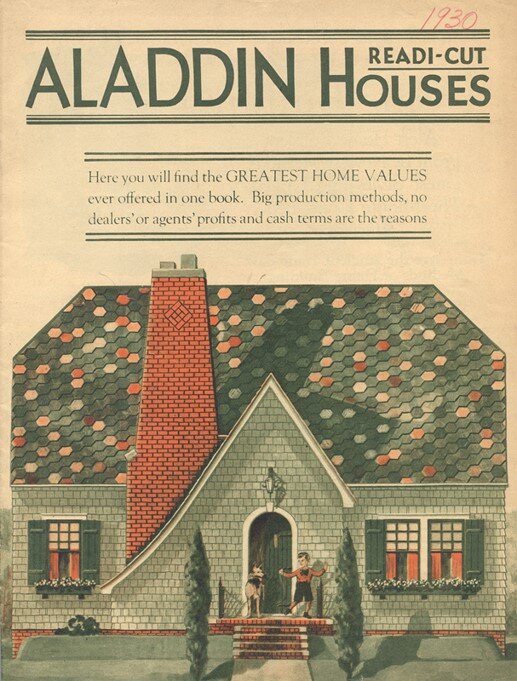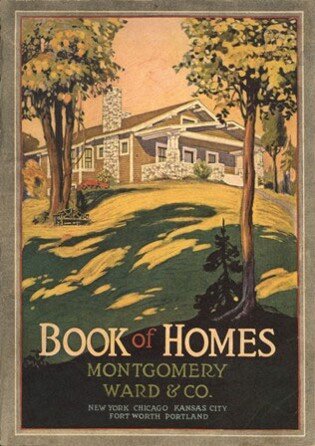By Alessa Wylie
John Leasure in 2012 with his painting of the South Portland Public Library
If you drive around greater Portland chances are you’ve noticed a building designed by John Leasure. They are usually hard to miss because of their notable Mid-Century Modern design. The South Portland Library, Franklin Towers in Portland, Saint Bartholomew Catholic Parish in Cape Elizabeth are just a few. Let’s learn a little bit more about this interesting man whose work reflects his like of simple, “clean” architectural lines and minimalist shapes.
A native of Altoona, Pa., John Leasure joined the Navy for two years and then went to Penn State as a music major. However, after seeing Gary Cooper’s performance as architect Howard Roark in the 1949 movie “The Fountainhead” Leasure changed his mind and decided that was what he wanted to do.
“When I went in to see “The Fountainhead” I had no idea what an architect was,” said Leasure. “I mean, I never drew a line. But I came out of that move and I thought, that’s great, that’s what I’m going to do with my life.”
He moved to Maine in his early 30s and opened his own office. At first, he worked on smaller jobs but then in 1965 he secured his first big municipal project, the South Portland Library. There he learned the politics of municipal design and budgets.
Drawings were scrutinized for ways to cut costs. A reflecting pool with fountains and a sculpture to be along the Broadway entrance was cut as were the stonewalls that he envisioned extending past the corner of the roof. Nevertheless, the building was hailed as an excellent example of functional modern architecture and was, for the time, one of the most modern buildings in the state of Maine.
Leasure continued to work on municipal projects for South Portland including the swimming pool portion of the South Portland Community Center on Nelson Road and the recently demolished Cash Corner fire station in addition to several building on the Southern Maine Community College Campus.
In 1970 he designed Saint Bartholomew Catholic Church in Cape Elizabeth to be a modern, “functional” building that could be used as a church, hall and meeting and social space. In Westbrook he designed the Public Safety Building and the Warren municipal pool.
In Portland, Leasure’s work includes the tallest building currently in the State of Maine, the Franklin Towers, standing 16 stories, 175 feet tall. He also designed the Cumberland County Jail and the Bramhall Fire Station.
Outside of greater Portland Leasure’s work includes the Diplomat Condominiums in Old Orchard Beach, the chapel at the veteran’s cemetery in Augusta and the hotels at the Sunday River ski resort in Bethel.
But perhaps his most appreciated building is the house he designed as his family home in 1972. The building, incorporating a classic Mid-Century Modern into the rocky hillside terrain of Littlejohn Road in Cape Elizabeth, was recently restored by Laurel and Richard LaBauve of SoPo Cottage. The yearlong restoration was recently featured in Maine Homes Magazine by Down East.
“Big boxes full of people,” Leasure has called many of his commercial projects. But they remain some of the most recognizable buildings all over the state and reflect the classic designs of Mid-Century Modern buildings.
Sources: Portland Press Herald, August 15, 2012










